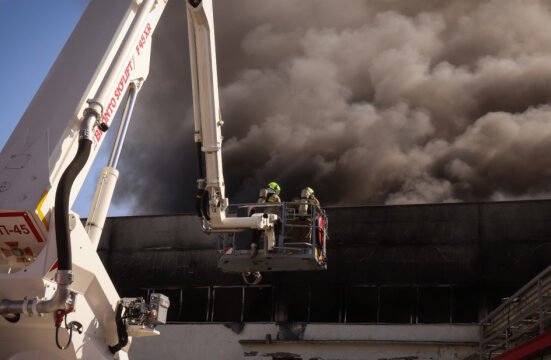TOPSHOT – Demonstrators take part in a protest over a fuel price hike ordered by the government to … [+]
The Mexican government recently reached an agreement with gasoline retailers to voluntarily cap gasoline prices at 24 pesos per liter ($4.50 per gallon). While this measure may make political sense—and the Mexican government is hardly alone in this calculation—it contradicts well-established research on how best to support low-income households facing rising energy costs.
Most policy experts advocate for eliminating fuel subsidies and price caps because they primarily benefit wealthier households, encourage wasteful consumption, increase carbon emissions, and place a heavy burden on government budgets.
A more effective approach is to allow fuel prices to reflect market conditions while providing direct cash assistance to households most affected by price increases. This ensures that low-income families receive the support they need without artificially lowering prices for everyone. Additionally, because targeted cash transfers cost less than subsidies, governments can redirect funds toward more productive investments, such as education, healthcare, and infrastructure.
This strategy is supported by academic research and endorsed by global and regional institutions, including the World Bank, the International Monetary Fund, the Inter-American Development Bank, the OECD, and the International Energy Agency (IEA). Whenever a country faces ballooning deficits or seeks to reduce carbon emissions, the recommendation is consistently the same: stop subsidizing fuel and instead use the savings to provide targeted financial assistance.
Yet, despite their inefficiencies, fuel subsidies remain widespread. IMF researchers estimate that “70% of gasoline consumption is priced at less than 60% of efficient levels, while 50% of diesel is priced at less than half the efficient level.” An “efficient” price would account not only for the market value of these fuels but also for the carbon taxes necessary to mitigate pollution.
If fuel subsidies are inefficient and costly, why do governments persist with them? Why do politicians who claim to champion working families end up subsidizing the wealthy? And why do they spend taxpayer dollars to artificially suppress fuel prices, despite the resulting overconsumption and environmental damage?
Why Fuel Subsidies Persist
One major factor behind the persistence of fuel subsidies is politics. It’s no surprise that cheap fuel wins votes. People notice lower prices at the pump, on heating bills, and in everyday expenses—and they often credit the government for keeping costs down. While wealthier households consume more fuel and thus reap the largest share of subsidies, lower-income families still feel some relief, albeit to a lesser extent. This allows governments to claim they are helping everyone, even when subsidies primarily benefit those who need them the least.
Raising fuel prices is also politically risky. An IMF team that analyzed 101 developing countries between 2001 and 2020 found that fuel price hikes are strongly linked to social unrest and anti-government protests. Countries with weak economic growth, high inflation, widespread corruption, and fragile institutions face the greatest risk.
Researchers from Uppsala University in Sweden, after examining data from 2003 to 2015, concluded in an article published in World Development that fuel price protests are even more likely in oil-producing countries, where citizens expect state-owned companies to provide fuel at a discount.
And another research team, using data from 2015 to 2022, observed in an article available in Energy Research and Social Science that poor income distribution correlates with social unrest when fossil fuel subsidies are removed. In these cases, raising prices can trigger public anger—even when subsidies are fiscally unsustainable.
Another reason fuel subsidies persist is misinformation. Many people believe subsidies are fairer than cash assistance, likely because they are more visible. A survey analysis published in Energy Research & Social Science examined public attitudes toward fuel subsidies and cash transfers in the U.K. and France during the 2022 energy crisis, when prices spiked after Russia invaded Ukraine. Initially, respondents in both countries preferred subsidies. Their preference was linked to unfounded perceptions that cash recipients misuse their funds on alcohol and tobacco or work less. However, when presented with data showing that subsidies disproportionately benefit the wealthy—and that the poor do not misuse their cash—support for subsidies declined in the U.K. and shifted toward cash transfers in France. This suggests that public opposition to reform often stems from a lack of information rather than deep ideological differences.
A variant of this challenge involves concerns about corruption and government competence, which erode public trust. Many people fear that cutting fuel subsidies will lead to higher prices without delivering the promised compensation, especially in countries with a history of corruption and broken promises. This was the case in Indonesia in 2013, according to an article published in Comparative Political Studies based on survey data. Additional examples of this problem are not hard to find.
A final challenge is administrative. Implementing cash transfers requires robust financial infrastructure, reliable digital payment systems, and well-managed social programs—including clear identification and registration processes for intended beneficiaries. Not all governments have these systems in place. Economists at the IDB found, for example, that many cash transfer programs in Latin America fail to reach most households—only 50% receive them, and 40% of recipients are not poor—underscoring the need for broad coverage and careful planning.
Global Lessons On Fuel Subsidies
Governments that have successfully replaced fuel subsidies with cash transfers follow a few key principles. They clearly explain their plan, ensuring the public understands the implementation strategy, who will receive compensation, and how much. They provide broad eligibility to avoid resentment and distribute cash transfers before price hikes take effect. They also coordinate across agencies to ensure smooth implementation and balance short-term fiscal relief with long-term investments.
For instance, Iran and Ecuador failed to follow these principles, unlike the Dominican Republic.
A review of Iran’s 2010 fuel subsidy reform available in Economic Research Forum discusses how it went form promise to disappointment. Initially, the program succeeded because the government deposited two months’ worth of cash transfers into household bank accounts before gradually increasing fuel prices. It provided a $90 monthly compensation to all families, regardless of income. However, because the transfers were too large and partially financed by printing money—and economic sanctions reduced the availability of fiscal resources—the program unraveled within a few years. Inflation eroded purchasing power, and the reform lost public support.
When the Iranian government attempted another fuel subsidy reform in 2019, it displayed little learning from the previous experience, making critical mistakes: it excluded 30% of households (including the middle class that supported the government) and failed to provide a clear process for registering beneficiaries. Fuel prices tripled overnight, leading to confusion, anger, and mass protests that forced the government to backtrack.
Ecuador’s 2019 attempt to remove fuel subsidies in exchange for an IMF loan failed in part because the government permitted a 25% price increase before putting cash assistance in place, according to a research paper published by the Pathfinders initiative at New York University”s Center on International Coopertation. The mistake sparked violent protests by indigenous peoples and forced a complete reversal of the policy.
The Dominican Republic achieved success by engaging in public communication campaigns, consulting key stakeholders, and keeping fiscal discipline. A World Bank technical report on cash transfers in the context of fuel energy reform shows how, beginning in 2004, the government gradually adjusted electricity prices, and in 2008, it introduced a phased increase in LPG prices. Low-income households received cash transfers through Bonogas and Bonoluz, voucher-like programs for LPG (used for cooking and taxi transport) and electricity. Crucially, these reforms took place during a period of macroeconomic stability, enabling smoother implementation.
An Effective System For Cash Transfers Is Key
Ultimately, transitioning away from fuel subsidies requires a reliable system for delivering cash transfers. Until 2018, the Mexican government had a renowned system of conditional cash transfers to the poor, but recent reforms have resulted in more resources being directed to the wealthy than to the poor, according to an analysis by CONEVAL, a Mexican think tank. Paying close attention to past lessons and improving how benefits are targeted would increase the likelihood of success if Mexico’s government—or any other— eventually opts for a full-fledged fuel subsidy reform.







